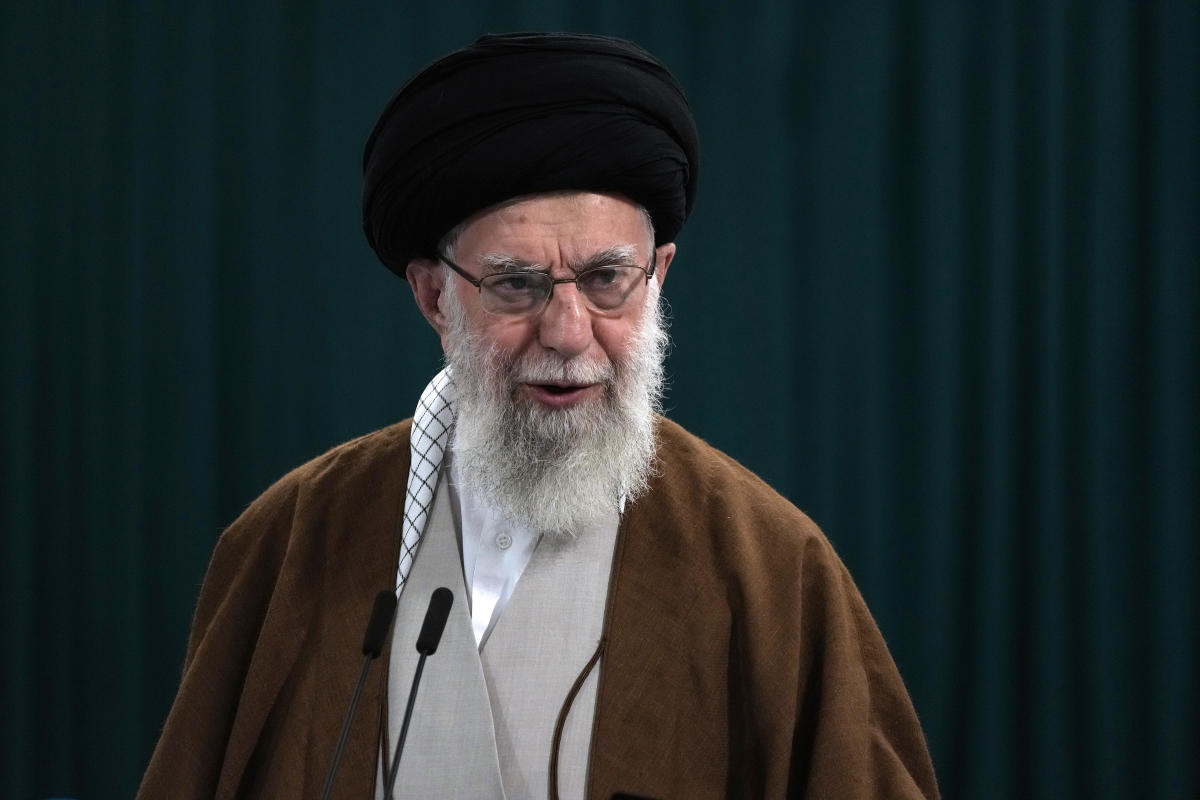JERUSALEM (AP) — The death of Iran’s president is unlikely to lead to immediate changes in Iran’s governing system or in its overarching policies, which will be decided by the Supreme Leader. Ayatollah Ali Khamenei.
But Ebrahim Raisiwho died in a helicopter crash on Sunday, was seen as a leading candidate to succeed the 85-year-old supreme leader, and his death makes it more likely that the job could eventually go to Khamenei’s son.
A hereditary succession would pose a potential crisis of legitimacy for the Islamic Republic, which was established as an alternative to the monarchy but which many Iranians already see as a corrupt and dictatorial regime.
Here’s a look at what comes next.
HOW DOES THE Iranian GOVERNMENT WORK?
Iran regularly holds elections for the president and parliament with universal suffrage.
But the supreme leader has the final say on all major policies, serves as commander-in-chief of the armed forces, and controls the powerful Revolutionary Guards.
The supreme leader also appoints half of the 12-member Guardian Council, a spiritual body that reviews candidates for the presidency, parliament and the Assembly of Experts, an elected body of lawyers responsible for choosing the supreme leader.
In theory, the clerics oversee the republic to ensure that it complies with Islamic law. In practice, the supreme leader carefully manages the ruling system to balance competing interests, advance his own priorities, and ensure that no one questions the Islamic Republic or its role above it.
Raisi, a hardliner seen as a protege of Khamenei, was elected president in 2021 after the Guardian Council blocked every other known candidate from running against him, and the turnout was the lowest in the Islamic Republic’s history. He succeeded Hassan Rouhania relative moderate who served as president for the past eight years and defeated Raisi in 2017.
After Raisi’s death, the relatively unknown Vice President Mohammad Mokhber became acting president, in accordance with the Iranian constitution, with elections due within 50 days. That vote will likely be carefully managed to produce a president who maintains the status quo.
That means Iran will continue to impose some degree of Islamic rule and crack down on dissent. It will enrich uranium, support armed groups in the Middle East and view the West with deep suspicion.
WHAT DOES THIS MEAN FOR THE SUCCESSION?
Presidents come and go, some more moderate than others, but each operates under the structure of the ruling system.
If there is any major change in Iran, it will likely come after Khamenei’s death, when a new supreme leader will be elected for only the second time since the 1979 Islamic Revolution. Khamenei succeeded the founder of the Islamic Republic, Ayatollah Ruhollah Khomeiniin 1989.
The next supreme leader will be chosen by the 88-seat Assembly of Experts, chosen every eight years from candidates vetted by the Guardian Council. In the most recent elections, in March, Rouhani was barred from running, while Raisi won a seat.
Any discussion of succession, or related machinations, takes place far from the public eye, making it difficult to know who will be considered. But the two people analysts say are Khamenei’s most likely successor are Raisi and the supreme leader’s son Mojtaba, 55, a Shiite cleric who has never held government office.
WHAT HAPPENS IF THE SUPREME LEADER’S SON SUCCEEDS HIM?
Leaders of the Islamic Republic dating back to the 1979 revolution have portrayed their system as superior not only to the democracies of the decadent West, but also to the military dictatorships and monarchies that rule throughout the Middle East.
The transfer of power from the supreme leader to his son could spark anger not only among Iranians already critical of the clerical rule, but also among supporters of the system who may see it as un-Islamic.
Western sanctions over the nuclear program have devastated Iran’s economy. And the enforcement of Islamic rule, which became stricter under Raisi, has further alienated women and young people.
The Islamic Republic has faced several waves of popular protests in recent years, most recently following the 2022 death of Mahsa Amini, who was arrested for allegedly not covering her hair in public. More than 500 people were killed in the violent crackdown and more than 22,000 people were arrested.
Raisi’s death could make the transition to a new supreme leader more difficult and lead to more unrest.
